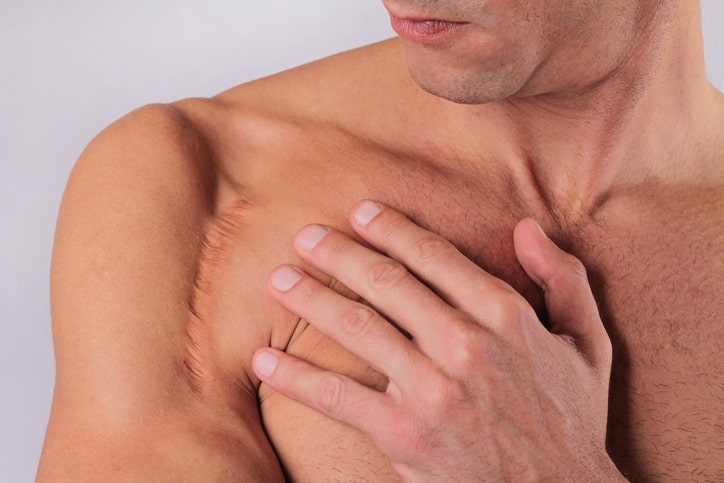
A rotator cuff tear may occur when you use your arm in repeated motions every day. If you participate in sports such as tennis, baseball or softball, or you clean windows or paint buildings, then you may experience pain caused by a rotator cuff tear. This injury may also happen if you lift a heavy object or fall on your arm suddenly.
At OrthoBethesda, we have a team of expert surgeons who specialize in providing shoulder pain treatment, including rotator cuff repair with graft augmentation to residents of Bethesda, MD.
What Is a Rotator Cuff Tear?
The rotator cuff includes four muscles and tendons that keep your shoulder joint stable and allow you to rotate and elevate your arms. Rotator cuff tears may occur in two forms:
- A partial tear: When a muscle in the rotator cuff gets damaged
- A complete tear: A severe injury in which a muscle or tendon rips, or the tendon gets torn or pulled away from the bone
What Are the Symptoms of a Rotator Cuff Tear?
Without a thorough medical examination, it’s difficult to know if a rotator cuff tear causes the shoulder pain you feel. Most rotator cuff tear cases have these symptoms:
- Difficulty raising the arm
- Feeling pain when the arm moves
- Experiencing weakness in the shoulder
- Inability to lift things up
- Hearing a popping or clicking sound while moving the arm
It’s important to book an appointment with an orthopedic surgeon if you notice any of these signs. If you don’t receive prompt treatment for your torn rotator cuff, you may end up having a locked or frozen shoulder that will be more difficult to treat.
What Is Rotator Cuff Repair With Graft Augmentation?
Your doctor will examine your injury and review its history to determine if you have a rotator cuff tear. They may order imaging tests in addition to range-of-movement tests. For severe rotator cuff tears, expect the following procedure:
- You sit in a beach-chair position. Anchor portals go next to the edge of the shoulder, and doctors carry out any subscapularis repair required.
- An arthroscope gets placed in the shoulder, and the torn tendons are released and decompressed.
- Sutures are placed on the torn rotator cuff.
- The fascia graft is harvested, folded, and anchored with a suture.
- Sutures are tied so the rotator cuff can have contact with the fascia graft.
This method reduces the chances of tearing the repaired rotator cuff again.
What Is the Rotator Cuff Surgery With Graft Recovery Time?
After rotator cuff augmentation surgery, you’ll have to wear a sling for about six weeks. Your doctor and physical therapist will also give you tips to help you hasten your recovery, including:
- Avoid lifting your arm at your shoulder
- Place an ice pack on your shoulder if you experience any swelling
- Take your sling off about five times a day, and move your hand, wrist, and elbow to improve blood circulation to these areas
After the tear heals, it’ll take another four to six weeks for you to start using your arm fully. You should avoid lifting heavy objects, and gradually increase the amount of activity you do with your arm and shoulder.
Further Reading
Complete vs. Partial Rotator Cuff Tears
Can a Rotator Cuff Tear Heal Without Surgery?
Schedule an Appointment
 ">
">
Get in touch
Contact OrthoBethesda to Discover if a Rotator Cuff Repair Is Ideal for You
To get lasting relief from shoulder pain, contact us at OrthoBethesda today to book an appointment with one of our surgeons. We offer compassionate care for everyone experiencing shoulder pain, and we’re prepared to use the best tools and procedures to help you restore full strength to your shoulder as soon as possible. You can also give us a call at (301) 530-1010 to book an appointment today.

